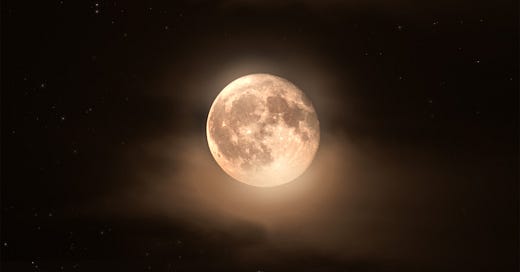Strawberry Moon Magic
All about June 2025's historic full moon & Tips & Tricks to get your best full moon shots!
There's a unique magic to the full Strawberry Moon as it takes its low, graceful journey across the summer sky, tracing the same southern path the winter sun once took. This year, it’s familiar warm glow—a nostalgic reminder of hazy summer evenings—was painted with an even deeper, more dramatic hue. By a strange happenstance, a veil of high-altitude smoke from distant Canadian fires drifted across the continents, filtering the moonlight and stealing away its silvery sheen, allowing only a sombre, ember-like glow to reach our eyes. It’s a moment of profound beauty born from a distant tragedy, connecting us all under one shared, smoky, magnificent sky.
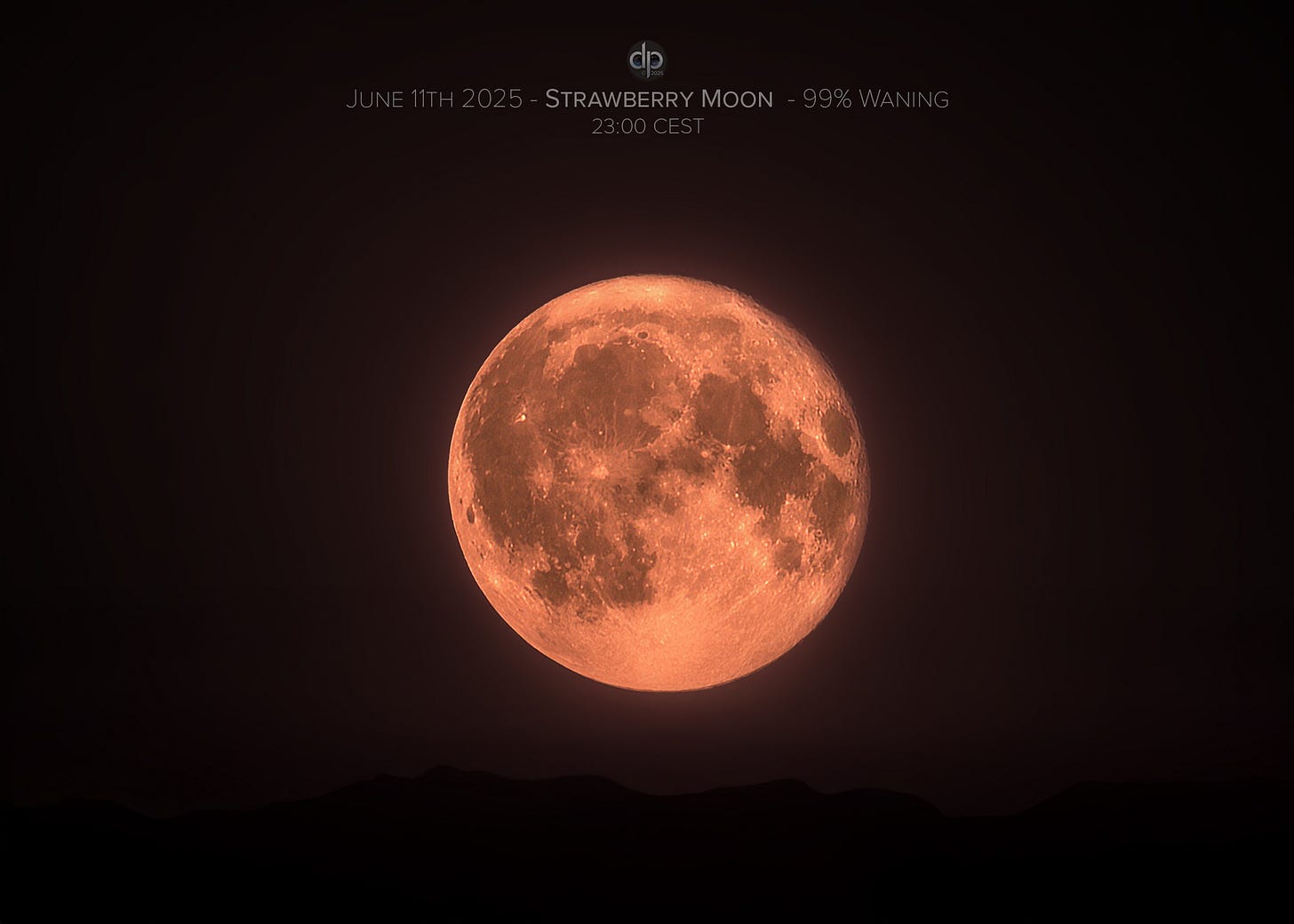
June's Strawberry Moon Was a Rare Celestial Spectacle
In June 2025, sky watchers were treated to a particularly special full moon, the Strawberry Moon, which peaked on June 11th. The name didn't come from the moon's colour, but rather from the Algonquin tribes of North America, who named it to mark the short but sweet season for harvesting wild strawberries. While the moon wasn't pink, its low position in the sky lent a warm, reddish hue. For many observers, particularly in Northern Europe, the atmospheric conditions resulted in an unexpectedly deep red, in proper strawberry form, that was even more vivid than anticipated.
What made the 2025 Strawberry Moon exceptional was an astronomical event known as a "major lunar standstill" or "lunistice," occurring only every 18.6 years. This caused the June full moon to be the lowest and most southerly full moon in the Northern Hemisphere since 2006. The moon traced a low arc across the southern sky for Northern Hemisphere observers. It appeared unusually large due to the "Moon illusion," a trick of the mind that makes celestial objects seem bigger near the horizon. This rare celestial alignment, placing the full moon in the constellation Ophiuchus, offered a unique viewing experience that won't be repeated until 2043, making it a memorable event for stargazers.
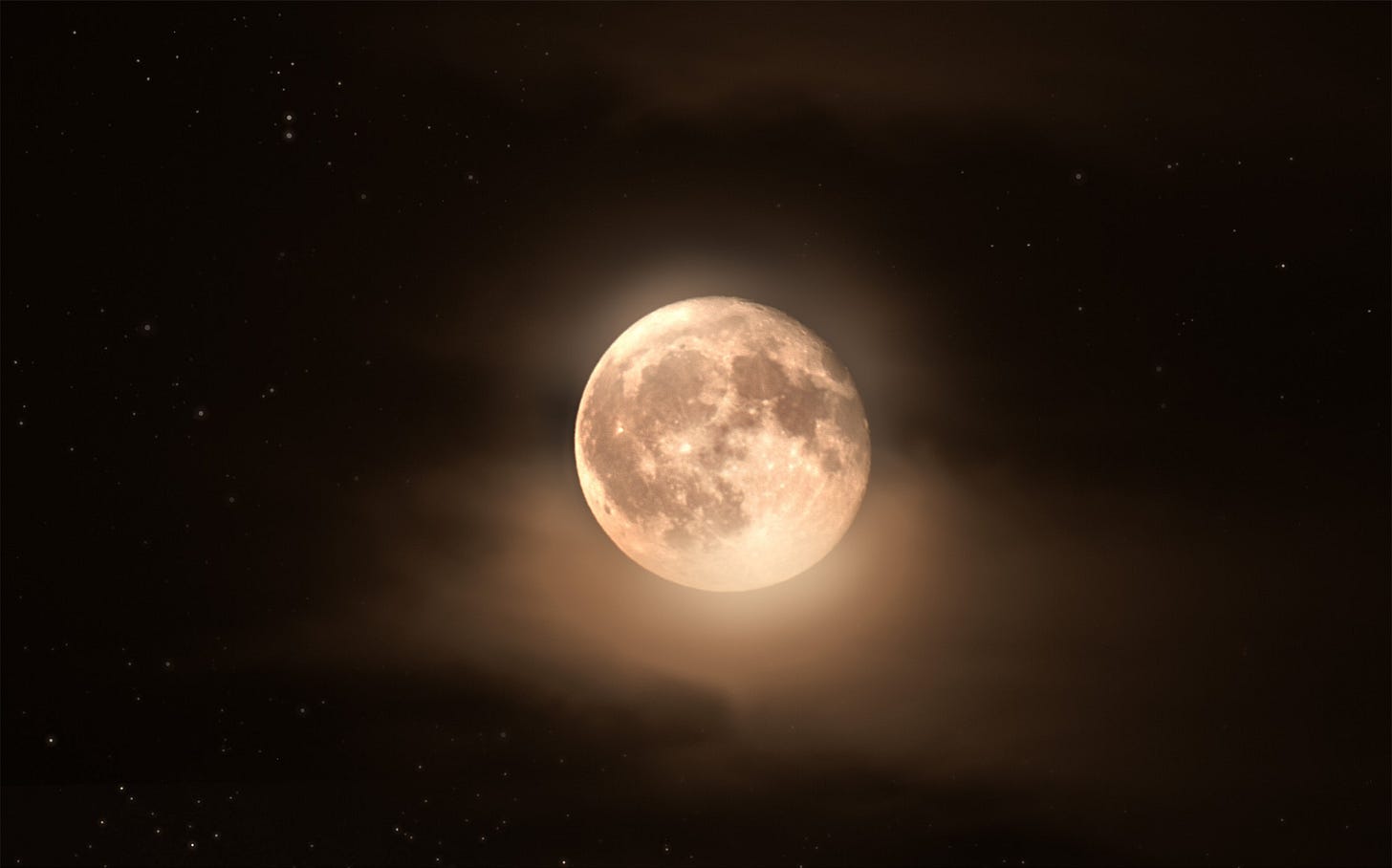
Making the Shot: Tips & Tricks
Capturing an image that shows both the intricate details of the moon's surface and the subtle beauty of surrounding clouds or stars is a classic astrophotography challenge. A single exposure can't do both; if you expose for the moon's surface, the sky will be black, and if you expose for the clouds and stars, the moon will be a completely overexposed, bright blob.
The final image here is a composite, blending two different types of exposures taken with the DWARF3 telescope:
The Detailed Moon: First, a series of very short exposures (e.g., 1/200th of a second) are taken. The DWARF3 stacks these automatically to create a single, noise-free, and highly detailed PNG image of the lunar surface against a perfectly dark sky.
The Atmosphere: Second, a much more prolonged exposure is taken, in this case, 15 seconds at a gain of 60. This is long enough to capture the faint light of the surrounding clouds and any bright stars, creating a beautiful atmospheric scene. In this shot, however, the moon itself is completely blown out.
The trick is to combine these two images in an application like Adobe Photoshop. By placing the detailed moon image as a layer on top of the long-exposure cloud image and perfectly aligning the two moons, you can use a layer mask to paint out the overexposed moon from the bottom layer carefully. This allows the sharp, perfectly exposed moon to show through, seamlessly integrating it into the atmospheric background. The result is a stunning photograph capturing the best of both worlds.
TIP: To add an extra dash of drama on a fresh layer, paint in highlights with the brush tool on the moon's edges to hide any black fringes and tie the two images together even better.
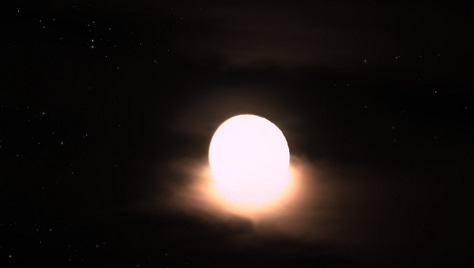
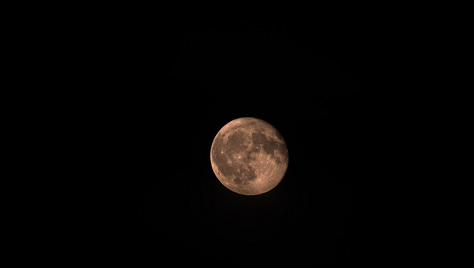

First, there was a whisper of light, then a brilliant crest over the alpine silhouette. Watching the Moon reclaim the night sky is a truly magical experience. Capturing this beautiful moonrise footage so effortlessly with the DWARF 3 smart scope feels like magic, too.
Video Capture Specifics
This smooth, fluid video of the moonrise was captured with the DWARF3 smart telescope using a specific technique to create a near real-time timelapse effect.
Instead of using the standard timelapse function, I shot this sequence in Video Mode. The DWARF3's Video Mode offers a key advantage: the ability to record with exposures as long as 0.5 seconds per frame. By using these longer half-second exposures, the camera gathers ample light to render the moon and its glow beautifully while still capturing enough frames to compile a seamless video.
The result is a timelapse that feels exceptionally smooth and natural, moving just slightly faster than real-time. This method avoids the sometimes jittery feel of traditional timelapses and allows you to appreciate the serene, steady climb of the moon as it majestically clears the horizon.
Thank you for coming along on this celestial journey! I love sharing these moments and the stories behind the shots.
If you'd like to go deeper with exclusive processing guides, tutorials, and behind-the-scenes insights, consider joining the CREW. You'll directly support this work and become part of our dedicated community of D3 sky watchers.
Coming soon, just for the CREW: I'm excited to announce the launch of the DwarfVision DATACLUB!
This will be an exclusive repository of my high-quality D3 captures, perfect for you to practice your processing techniques. As a special perk, CREW members will get a free data download of the month’s featured DSO!
Your support makes all of this, including the upcoming DATACLUB, possible. Thank you!


